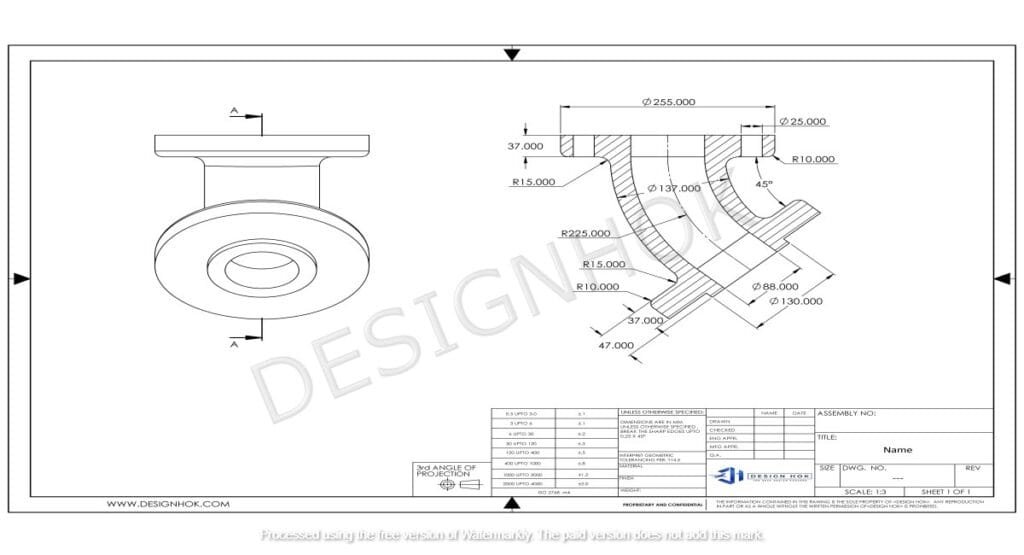AutoCAD is a versatile software developed by Autodesk, and while it has a strong reputation for its 2D drafting capabilities, it is far more than just a 2D design tool. For companies like DesignHOK, which specialize in diverse design services, AutoCAD provides an extensive range of features that go beyond 2D drafting. Let’s explore whether AutoCAD Just for 2D Design for DesignHOK is limited to 2D or if it also supports 3D design and other advanced functionalities relevant to modern design projects.
AutoCAD’s 2D Capabilities
AutoCAD Just for 2D Design for DesignHOK is widely recognized for its robust 2D drafting tools, which are essential for creating precise technical drawings, floor plans, schematics, and blueprints. These features make AutoCAD Just for 2D Design for DesignHOK a go-to software for engineers, architects, and designers who need accurate and detailed representations of their projects. Key 2D features include:
- Layering: Enables organized drafting with separate layers for different elements of a design.
- Annotations and Dimensions: Allows adding text, measurements, and labels to enhance clarity.
- Drawing Precision: Tools like object snaps, grids, and guides ensure precise alignment and scaling.
- Customization: Supports templates, line styles, and block libraries to streamline repetitive tasks.
For DesignHOK, these capabilities are crucial for creating detailed 2D technical drawings, which are often the foundation for engineering and architectural projects.
AutoCAD Just for 2D Design for DesignHOK Features
While AutoCAD Just for 2D Design for DesignHOK 2D functionalities are renowned, it also excels in 3D modeling. The software includes tools for creating three-dimensional objects and rendering them with realistic textures and lighting. This makes AutoCAD Just for 2D Design for DesignHOK suitable for projects requiring 3D visualization. Its 3D features include:
- Solid Modeling: Design complex 3D objects using primitives, Boolean operations, and extrusion.
- Surface Modeling: Create smooth and detailed surfaces for designs requiring intricate shapes.
- Rendering: Generate photorealistic images of 3D models, which help clients visualize the end product.
- 3D Navigation: Rotate, zoom, and pan to view designs from different angles.
These 3D tools enable DesignHOK to expand its services, offering clients more dynamic and visually compelling design solutions.

Applications for AutoCAD Just for 2D Design for DesignHOK
DesignHOK can utilize AutoCAD for both 2D and 3D projects, covering various aspects of design, including:
- Mechanical Design Projects: Use AutoCAD Just for 2D Design for DesignHOK for detailed mechanical components, including assembly drawings and part designs.
- 3D Modeling Projects: Create realistic 3D representations of engineering or architectural concepts.
- Rendering Projects: Develop high-quality visual presentations to enhance client proposals.
- 2D Drafting & Engineering Projects: Provide detailed schematics, plans, and layouts for engineering applications.
Why AutoCAD Just for 2D Design for DesignHOK
AutoCAD Just for 2D Design for DesignHOK dual capability in 2D and 3D design ensures that it remains a versatile tool for diverse project needs. DesignHOK benefits from the following:
- Flexibility: Handle projects requiring only 2D drafting or fully immersive 3D models.
- Accuracy: Deliver precise designs that meet stringent client and industry standards.
- Collaboration: Share and integrate designs seamlessly with other Autodesk software like Revit and Fusion 360.
- Scalability: Adapt to small-scale designs or large, complex projects.
Conclusion
AutoCAD Just for 2D Design for DesignHOK is not limited to 2D design; it is a comprehensive tool that supports both 2D drafting and 3D modeling. For DesignHOK, this versatility makes AutoCAD an indispensable software for delivering high-quality, accurate, and visually compelling designs across multiple disciplines. Whether the project demands detailed 2D schematics or intricate 3D visualizations, AutoCAD equips DesignHOK with the tools to excel and meet diverse client needs effectively.
FAQ
1. What is AutoCAD primarily used for?
AutoCAD is primarily used for creating precise 2D drawings and 3D models. It is commonly employed in architecture, engineering, construction, and manufacturing to design floor plans, mechanical components, and electrical schematics.
2. Is AutoCAD better for 2D or 3D design?
AutoCAD excels in both 2D and 3D design. However, its 2D drafting features are often favored for technical drawings, while its 3D modeling tools are ideal for creating realistic models and visualizations.
3. Can AutoCAD 2D designs be converted into 3D models?
Yes, AutoCAD allows users to convert 2D drawings into 3D models. You can extrude, revolve, or sweep 2D geometries to create 3D objects.
4. What industries rely on AutoCAD for 2D design?
Industries such as architecture, mechanical engineering, electrical engineering, and civil engineering heavily use AutoCAD for detailed 2D technical drawings.
5. Does AutoCAD have 3D visualization tools?
Yes, AutoCAD includes 3D visualization tools that let users rotate, render, and explore their designs in a virtual space, making it easier to analyze and present concepts.
6. Are there specialized AutoCAD versions for different applications?
Yes, AutoCAD offers specialized toolsets, such as AutoCAD Architecture, AutoCAD Mechanical, and AutoCAD Electrical, to cater to specific industry needs, whether for 2D or 3D applications.
7. Can beginners learn both 2D and 3D in AutoCAD?
Absolutely. AutoCAD provides tutorials and learning resources that guide beginners through both 2D drafting and 3D modeling. The user interface is designed to be intuitive, making it accessible for newcomers.
8. What are some 3D features in AutoCAD?
AutoCAD’s 3D features include solid modeling, surface modeling, mesh modeling, 3D rendering, and material application. These tools enable users to create detailed and realistic 3D designs.
9. Is AutoCAD available on mobile for 2D design?
Yes, AutoCAD has a mobile app that supports 2D design. Users can draft, edit, and view drawings on the go, although 3D features may be limited in mobile versions.
10. Why is AutoCAD still popular for 2D drafting?
AutoCAD remains popular for 2D drafting due to its precision, versatility, and industry-wide adoption. It offers a range of tools for creating detailed and accurate 2D designs, essential for technical projects.





